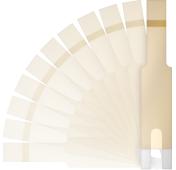Testing Your Blood Sugar Levels: 4 Steps for Effective Testing

Learn how to check your blood sugar levels with these four simple steps that will help you self-monitor your blood glucose more effectively.
If you’ve recently been diagnosed with diabetes, there is likely a lot that is running through your mind. One of them may be blood glucose monitoring and testing. Why do I need to test? How do I do it correctly? Can I really trust the numbers?
Blood glucose testing is essential to managing your diabetes. It gives you a “snapshot” of your blood glucose levels, which changes throughout the day. You need to be able to trust the results you get from your blood glucose monitor or meter so that you can act on them. Here are three steps to help you get accurate readings:
1. Remember to wash your hands
Before you test, wash your hands with warm, soapy water. Then, rinse and dry. Testing on unwashed hands (even if they might seem clean) may affect results. For example, say you just ate a bowl of cherries and then tested right after. The sugar from the cherries on your fingers may cause a high result, even though your blood glucose levels are not.
2. Check your meter
No meter is 100 percent accurate – there will always be some variation between your meter reading and your lab results. Refer to your owner’s booklet for guidelines for obtaining an accurate meter to lab comparison.
Find out more about normal blood glucose levels. 1
3. Use the right test strips for your meter
A specific type of test strip should be used for the meter you have. So, be sure to check the type of test strip you need, and use only those strips for your meter. Keep in mind that OneTouch® test strips expire 6 months after you open the vial.
4. Interpreting your results
Remember to write down your results in a logbook after you test your blood glucose level or log it on your diabetes tracking app. This can make managing and monitoring your diabetes easier. We recommend the app that comes with the OneTouch Verio® Flex and the OneTouch Verio Reflect® meter, OneTouch Reveal® mobile app. This will help you start to see trends in how food, activity and other factors might affect your blood glucose levels. For example, if you notice spikes in glucose levels at the same time each day, you can speak with your doctor to understand your results.
By following these simple steps, you can test with confidence – and take more control of your blood glucose levels, and your diabetes 2.
References:
1 Diabetes Canada. (2018, April). Managing your blood sugar. Retrieved March 10, 2021, from https://www.diabetes.ca/diabetescanadawebsite/media/managing-my-diabetes/tools%20and%20resources/managing-your-blood-sugar.pdf?ext=.pdf
2 American Diabetes Association®. (n.d.). The Big Picture: Checking your Blood Glucose. Retrieved March 8, 2021, from https://www.diabetes.org/healthy-living/medication-treatments/blood-glucose-testing-and-control/checking-your-blood-glucose?referrer=https://www.google.ca/
Related articles
CA-OTB-2100011











